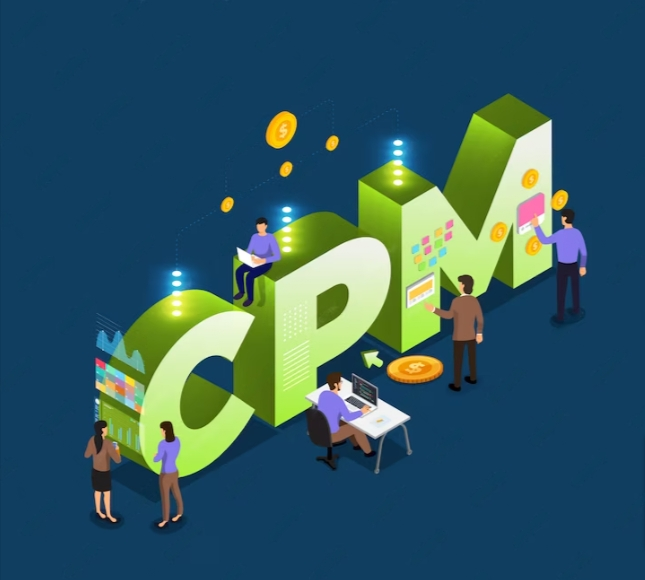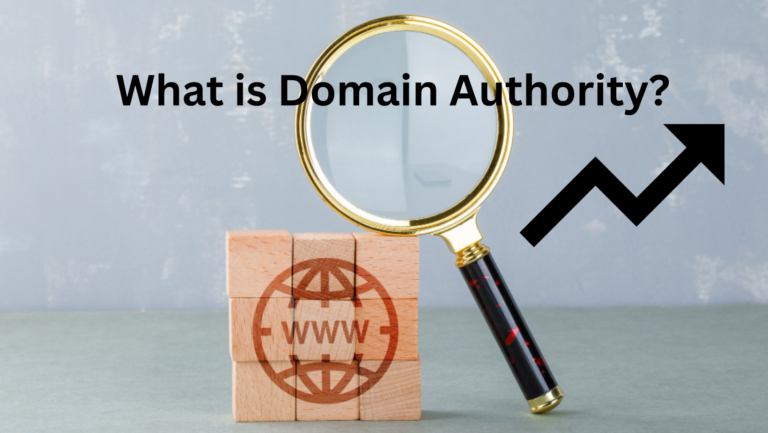CPM Meaning: What CPM Is & Why It Matters in Digital Marketing
CPM, short for “Cost Per Mille” or “Cost Per Thousand,” represents the price an advertiser pays for every 1,000 impressions of their advertisement. It’s a common pricing model in digital advertising, particularly for display ads, where advertisers pay based on the number of times their ad is displayed (impressions), regardless of whether the viewer clicks on the ad or not.
CPM is an acronym that often takes center stage. But what is CPM? and why does it hold such significance in the advertising world? This comprehensive guide will demystify CPM meaning, explore its various facets, and explain why it matters in today’s digital marketing landscape.
Understanding CPM – Cost Per Mille
CPM stands for “Cost Per Mille,” with “mille” being the Latin word for a thousand. Essentially, CPM represents the cost incurred by advertisers for every one thousand impressions of their ad. An impression, in this context, refers to a single view or display of an ad on a web page, app, or other digital platform. CPM is a critical metric that helps advertisers evaluate the efficiency and cost-effectiveness of their advertising campaigns.
How CPM Works
When advertisers launch digital ad campaigns, they often have specific objectives in mind, such as brand exposure, lead generation, or product sales. To achieve these objectives, they bid on advertising spaces across various platforms. These bids are based on CPM rates. Advertisers set a CPM rate they are willing to pay for every thousand impressions of their ad.
The formula for calculating CPM (Cost Per Mille or Cost Per Thousand) is:
CPM = Number of Impressions / Cost of Advertising×1000
This formula calculates the cost incurred by the advertiser for every 1,000 impressions of their ad.
Real-Life Examples of CPM Calculations:
Example 1:
Let’s say an advertiser pays $500 for 100,000 impressions of their display ad.
CPM = 500 / 100,000×1000=$5
Therefore, the CPM for this ad campaign is $5.
Example 2:
An advertiser invests $1,200 in a video ad campaign that generates 150,000 impressions.
CPM = 1,200 / 150,000×1000 = $8
In this case, the CPM for this campaign is $8.
These examples illustrate how CPM is calculated by dividing the cost of advertising by the number of impressions, then multiplying the result by 1000 to derive the cost per 1,000 impressions. This metric helps advertisers assess and compare the efficiency of their ad campaigns across different platforms or strategies
Why CPM Matters in Digital Marketing
- Cost Efficiency: CPM allows advertisers to assess the cost efficiency of their campaigns. By understanding how much they’re paying for each impression, advertisers can control their budget and allocate resources more effectively.
- Ad Campaign Comparison: CPM enables advertisers to compare the performance of different ad campaigns. This comparison helps identify which campaigns are delivering the best results for the cost.
- Audience Targeting: Advertisers can use CPM to refine their audience targeting. By analyzing CPM data, they can determine which audience segments are more cost-effective to reach.
- Optimizing Campaigns: CPM data can highlight which ad placements or channels are delivering the most impressions. Advertisers can then optimize their campaigns for maximum reach and exposure.
CPMs in Different Contexts
CPM is not a one-size-fits-all metric; it can have variations depending on the specific marketing objectives and platforms. Here are a few different contexts where CPM plays a significant role:
- Target CPM (tCPM): Some platforms offer target CPM, which allows advertisers to set specific CPM goals based on the outcomes they want to achieve.
- CPMs in Video Advertising: In the world of video advertising, CPM can also stand for “Cost Per Completed View.” This metric focuses on the cost of each completed video view, which is particularly crucial for video ad campaigns.
- CPMs in Programmatic Advertising: Programmatic advertising utilizes CPM to automate the buying and selling of ads. Advertisers can set their preferred CPM rates, and the system will bid on ad spaces that match these rates in real time.
CPM Trends and Future Insights
As of late, CPM rates have displayed dynamic shifts influenced by various factors:
Current Trends in CPM Rates:
Fluctuating Demand: CPM rates have seen fluctuations driven by changes in demand, especially during economic shifts and significant global events like the COVID-19 pandemic.
Platform Dominance: Major digital platforms like Google, Facebook, and Amazon have a significant impact on CPM rates due to their dominance in digital advertising.
Privacy Regulations: Increasing privacy regulations and limitations on tracking mechanisms (e.g., third-party cookies) have impacted targeting capabilities, potentially altering CPM rates.
Projections for the Future:
Recovery Post-Pandemic: With recovery from the pandemic ongoing, CPM rates may stabilize or experience gradual growth as businesses reinvest in advertising.
Adaptation to Privacy Changes: As digital marketing adapts to evolving privacy regulations, CPM rates might shift due to changes in targeting capabilities and methodologies.
AI and Personalization: Advances in AI-driven ad targeting and personalization might lead to more efficient ad spends, potentially influencing CPM rates.
Emerging Technologies Affecting CPM:
AI and Machine Learning: Advanced algorithms are improving ad targeting and optimizing campaigns, potentially impacting CPM rates by enhancing efficiency and relevancy.
Contextual Advertising: As reliance on third-party data diminishes, contextual advertising—targeting based on content context—might influence CPM rates and targeting strategies.
Privacy-Compliant Solutions: Innovations in privacy-centric ad technologies and solutions might reshape targeting methods, affecting CPM rates.
The future of CPM rates remains intertwined with technological advancements, regulatory changes, and industry adaptations. As digital advertising evolves to meet changing landscapes, CPM rates are likely to respond dynamically to these shifts, influenced by emerging technologies and evolving market demands.
UberCPM: The Future of CPM Optimization
The digital marketing landscape is constantly evolving, and new tools and strategies are emerging to help advertisers make the most of their CPM. One such innovation is “UberCPM,” a concept that aims to enhance the efficiency and impact of CPM-based campaigns. UberCPM leverages data analytics, audience insights, and real-time bidding to optimize ad delivery and ensure advertisers get the most value for their CPM investments.
Going Deeper into CPM
To understand CPM more comprehensively, let’s delve into its different aspects:
- CPM vs. CPC: While CPM focuses on impressions, CPC (Cost Per Click) measures the cost of each click generated by an ad. Depending on your campaign objectives, one may be more relevant than the other.
- CPM vs. CPA: CPA (Cost Per Action) tracks the cost associated with specific actions, such as form submissions or product purchases. It’s ideal for performance-driven campaigns.
- Dynamic CPM: In dynamic CPM, the cost of ad impressions varies based on real-time factors like user behavior and competition, ensuring more efficient spending.
The Essence of Effective CPM Management
Effective CPM management involves several key strategies:
– Audience Segmentation: Understand your audience segments and tailor your CPM rates to maximize exposure among those most likely to convert.
– Ad Placement Optimization: Identify the best-performing ad placements and allocate budget accordingly to boost efficiency.
– Budget Monitoring: Keep a close eye on your budget allocation to ensure you’re getting the best ROI for your CPM spending.
Enhancing Digital Marketing with CPM
CPM’s significance in digital marketing cannot be overstated. By grasping the fundamentals of Cost Per Mille, advertisers can wield this metric as a powerful tool for cost-efficient campaigns, audience targeting, and performance optimization.
As the digital advertising landscape continues to evolve, understanding and effectively utilizing CPM is paramount for success in reaching and engaging target audiences.
Whether you’re exploring the intricacies of CPM, evaluating the impact of your ad campaigns, or considering cutting-edge strategies like UberCPM, staying informed about this essential metric will be key to achieving your marketing goals.
CPM in a Nutshell
CPM, which stands for “Cost Per Mille,” is a fundamental metric in digital advertising. It represents the cost an advertiser incurs for every one thousand impressions of their ad. An impression, in this context, denotes a single display of an ad on a web page, mobile app, or any other digital platform. By examining the CPM, advertisers can evaluate the efficiency of their ad campaigns, helping them make informed decisions about their marketing budgets.
How CPM Operates
When advertisers embark on digital ad campaigns, they often have specific objectives in mind, ranging from enhancing brand visibility to lead generation or boosting product sales. To achieve these goals, they bid on ad spaces across various digital platforms. These bids are determined by CPM rates. Advertisers specify the amount they are willing to pay for every thousand impressions their ad garners.
The Significance of CPM in Digital Marketing
- Cost Efficiency: CPM offers advertisers the ability to assess the cost-effectiveness of their campaigns. By understanding the expenses associated with each impression, advertisers can better manage their budgets and allocate resources more efficiently.
- Comparing Ad Campaigns: CPM allows advertisers to compare the performance of different ad campaigns. This comparison is crucial in identifying which campaigns yield the best results for the cost incurred.
- Refining Audience Targeting: By analyzing CPM data, advertisers can fine-tune their audience targeting. This helps them identify which audience segments are more cost-effective to reach, ensuring that their marketing efforts are directed towards the most valuable prospects.
- Campaign Optimization: CPM data sheds light on which ad placements or channels are delivering the most impressions. Armed with this information, advertisers can optimize their campaigns for maximum reach and exposure.
CPM in Different Contexts
CPM is not a one-size-fits-all metric; it can be viewed differently based on specific marketing objectives and platforms. Here are some different contexts where CPM plays a vital role:
- Target CPM (tCPM): Some digital advertising platforms offer a feature known as target CPM. It allows advertisers to set specific CPM goals based on the outcomes they aim to achieve.
- CPMs in Video Advertising: In the domain of video advertising, CPM can also represent “Cost Per Completed View.” This metric focuses on the cost associated with each completed video view, a particularly crucial consideration for video ad campaigns.
- CPMs in Programmatic Advertising: Programmatic advertising relies heavily on CPM to automate the buying and selling of ad placements. Advertisers set their preferred CPM rates, and the system then bids on ad spaces that align with these rates in real time.
Empowering Digital Marketing with CPM
The importance of CPM in digital marketing cannot be overstated. By grasping the fundamentals of “Cost Per Mille,” advertisers can wield this metric as a potent tool for managing campaign costs, fine-tuning audience targeting, and optimizing performance.
As the digital advertising landscape continues to evolve, understanding and effectively utilizing CPM remains paramount for achieving marketing objectives. Whether you’re exploring the intricacies of CPM, evaluating the impact of your ad campaigns, or considering innovative strategies like UberCPM, staying informed about this essential metric is key to reaching and engaging your target audience effectively.






